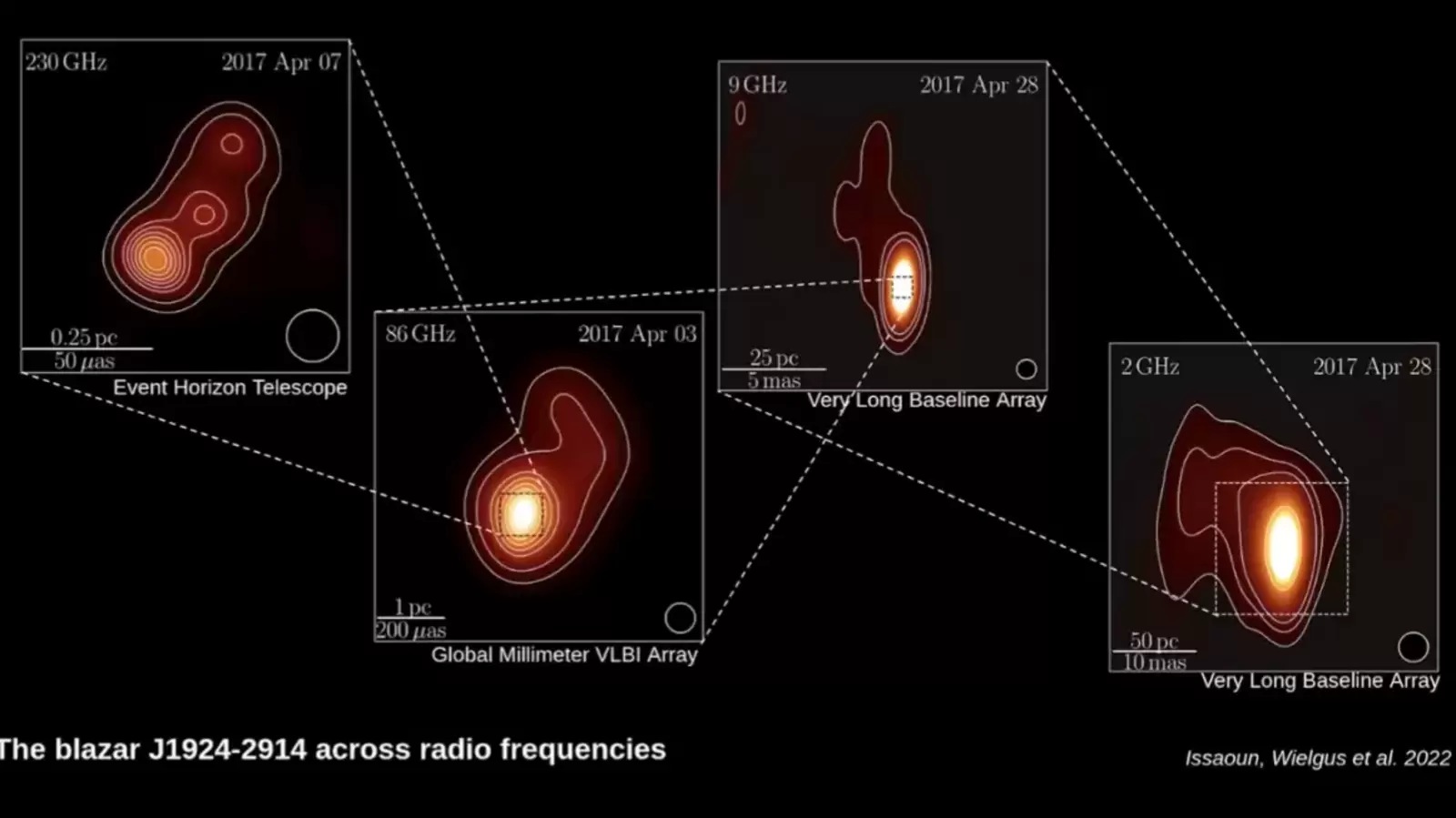Supermassive Black Hole photo taken by Event Horizon Telescope: Check it out
The supermassive black hole captured by the Event Horizon Telescope, in collaboration with two other radio-telescope arrays.

In 2017, the Event Horizon Telescope which included a collaboration of 8 telescopes around the world at that time captured a Blazar named as J1924-2914 nearly 3.5 billion light-years away from Earth. According to NASA, Blazar is a black-hole-powered galaxy. As matter falls toward the supermassive black hole at the galaxy's center, some of it is accelerated outward at nearly the speed of light along jets pointed in opposite directions.
According to space.com, the supermassive black hole is engulfing huge amounts of gas, and that material forms what scientists call an accretion disk. The gas in the disk can heat up to millions of degrees Fahrenheit due to the gas being so dense. There are also powerful magnets entwined within the disk which collect all the material engulfed by the black hole and funnel it away in the form of a jet. If it is looked at an angle, it is called a Quasar, but if looked in a top-down way, it is called a Blazar.
Supermassive Black Hole captured by telescope
Sara Issaoun, an astrophysicist at the Harvard–Smithsonian Center for Astrophysics and lead scientist behind the observations said, "Our images constitute the highest angular-resolution images of polarized emission from a quasar ever obtained.”
"We see interesting details in the strongly polarized innermost core. [the shape of the polarized emission] is hinting at the presence of a twisted magnetic-field structure."
This blazar has played an important role in helping scientists study the supermassive black hole, Sagittarius A*, in our Milky Way Galaxy. Due to the compact and relatively unchanged nature of the blazar, scientists have used it to calibrate the Event Horizon Telescope for more accuracy and clarity while capturing these celestial objects.
Therefore, by getting a better understanding of J1924-2914, the observations made by scientists of the Sagittarius A* supermassive black hole can be improved even further.
Catch all the Latest Tech News, Mobile News, Laptop News, Gaming news, Wearables News , How To News, also keep up with us on Whatsapp channel,Twitter, Facebook, Google News, and Instagram. For our latest videos, subscribe to our YouTube channel.































